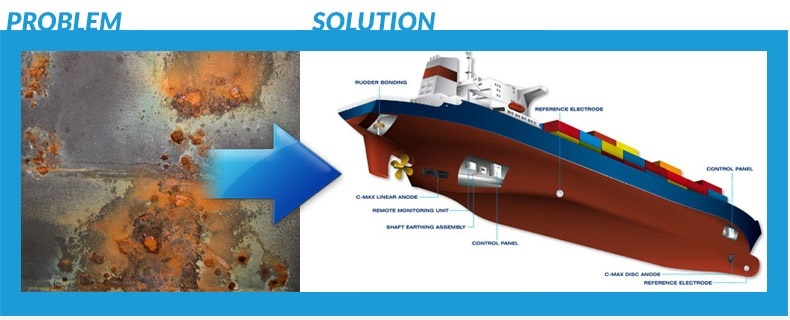The prevention of corrosion by electrochemical techniques. On tankers it may be applied either externally to the hull or internally to the surfaces of tanks. At terminals, it is frequently applied to steel piles and fender panels.
Note:
- Steel ships corrode, and in salt water and a salty atmosphere they tend to corrode fast so that they need to be protected against corrosion.
- Coatings are used primarily, but can be usefully supplemented by cathodic protection, an electro-chemical process that was invented in Victorian times to protect the copper bottomed wooden warships from seawater, but which has over the years been adapted for both marine and shore-side applications.
There are two types of cathodic protection in use today,
- Passive
- Active.
The former depending on the use of “sacrificial anodes” which are attached to the ship’s hull, or inside ballast, providing the positive electrodes in an electrolytic process that protects the structure in its vicinity, which forms the cathode or negative electrode.
Gradually, the effect of sea water “sacrifices” the anodes, which are made of magnesium alloys, zinc or aluminium, rather than the structure itself, which remains protected as long as the anodes remain intact and doing their job.




Leave a Comment